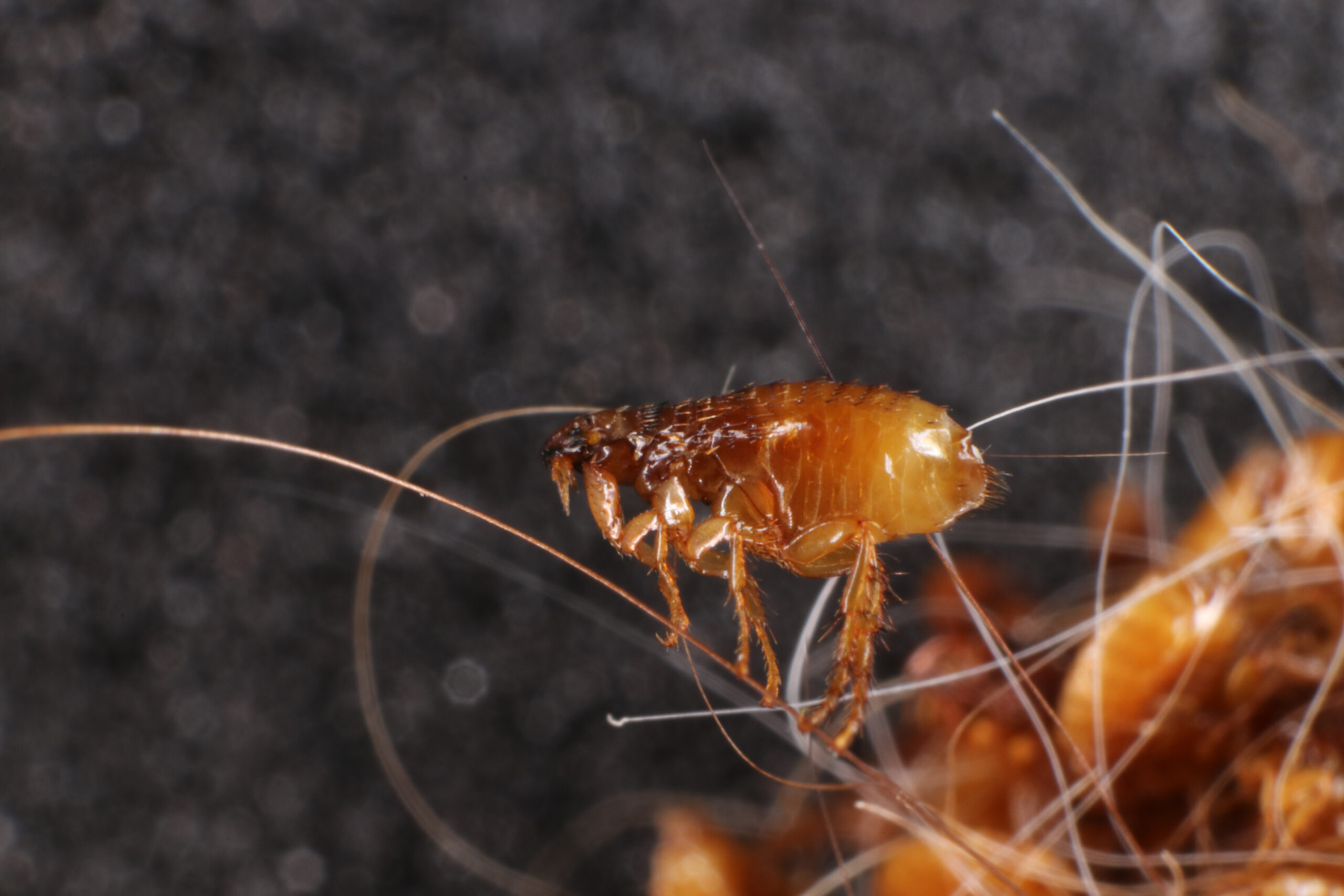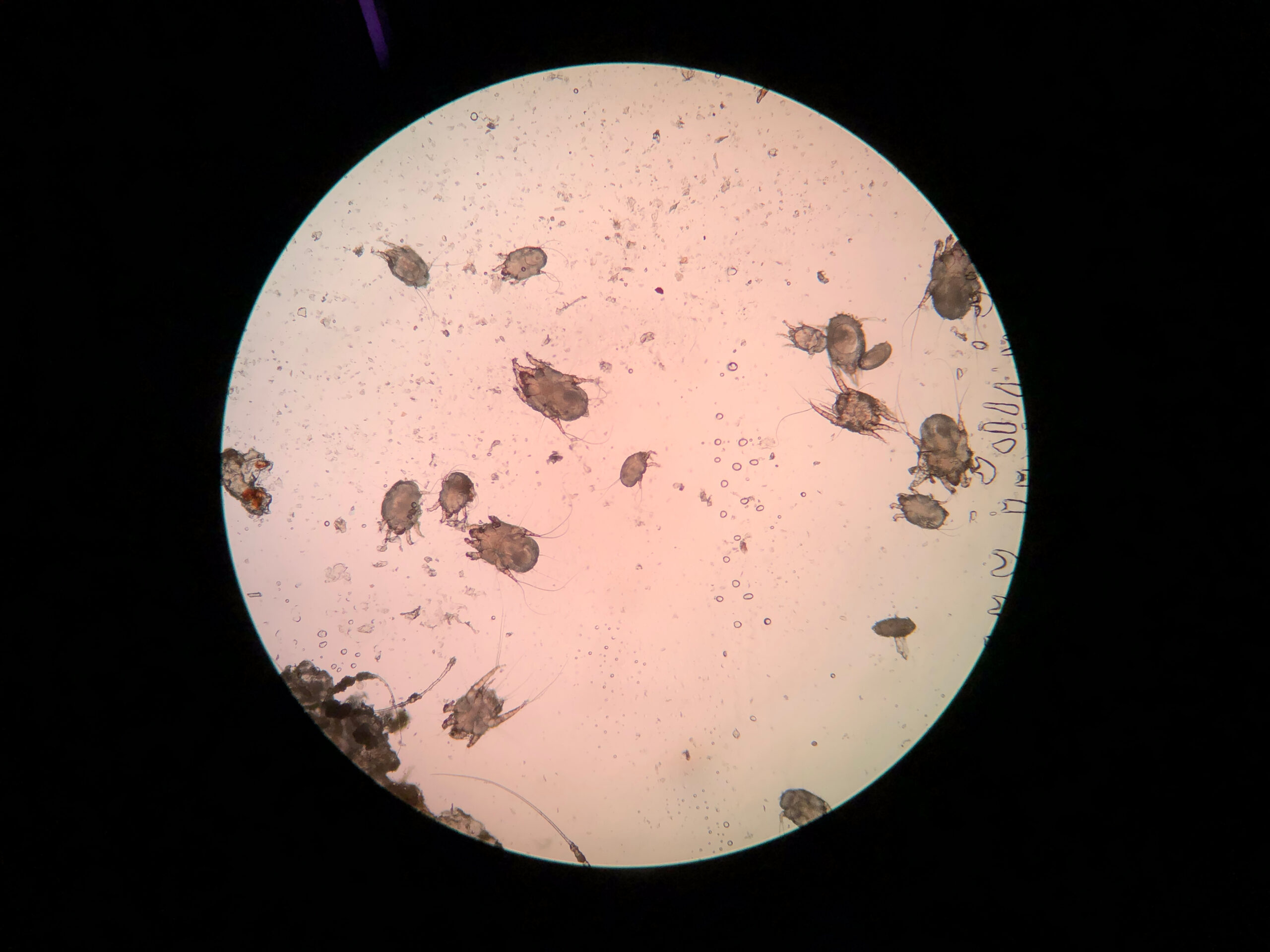4 Common Pests Found on Cats
4 Common Pests Found on Cats
Today, August 8, is International Cat Day! Cats are such a popular pet because — like any animal — they have their own personalities and quirks that make them a fun companion to have in the home. Cats are generally more independent than dogs, so it is a very different experience to have a feline in the family rather than a canine. This is especially true for pet owners who allow their cats to roam around the neighborhood and simply leave some food and water out for them to enjoy upon their return home. Unfortunately, cats are still susceptible to contracting dangerous pests, which can be more difficult to spot on cats than on dogs since cats groom themselves much more often. Indoor cats are less at risk than outdoor cats, but any cat can still get pests simply because they are warm-blooded mammals. Let’s take a look at some of the most common pests found on (or in) cats and the key differences between them, so you know what to keep an eye out for when hanging out with your feline friend.
Fleas

Signs: excessive scratching and biting of self, bald spots, swelling, rash, lethargic, irritated attitude, tiny dark spots on skin or in fur
Possibly the most common pet-related pest, fleas are a major problem for cats of all kinds. These bloodsucking insects are tiny and can just look like dark spots on your cat’s fur, especially on dark-colored cats. Since fleas don’t have wings, they go from host to host by crawling or jumping up to 2 feet high to land on a secure section of the pet. They burrow under the fur to live on the skin, where they can continuously feed and lay eggs. Many fleas have a specific animal that they prefer and were named after (dog flea, rat flea, cat flea, etc.), but they can still feed upon any mammal they find. Cats can contract fleas from a variety of places, such as in the yard, somewhere else in the neighborhood, at the vet, or from other cats and dogs. Fleas can spread all kinds of dangerous pathogens and diseases, especially if they have been feeding on an infected mammal before moving on to your cat. Some of the most common ones include feline typhus, bubonic plague, cat scratch fever, and tapeworms (when fleas eat the eggs). Like many bloodsucking pests, fleas are much more harmful than they appear.
Fleas thrive indoors far more than outdoors, so if they happen to hitch a ride on the back of your cat, they will begin laying even more eggs and causing more problems for your pet than before. The flea’s saliva releases anticoagulants into its host’s blood, which causes the blood to flow more quickly and become easier for the fleas to consume. If your cat is allergic to fleas, they are technically allergic to their saliva and experience a reaction to that substance. That being said, any cat (or mammal) will still have itchy bumps from flea bites and require medical attention. Your vet will likely prescribe some kind of gentle soap or flea treatment to eliminate the fleas without irritating your cat’s skin further. A flea comb will also do the trick in removing the fleas individually, especially when they are in clusters. As a side note, many pest control companies (including ours) require that your pets be treated for fleas before the technicians arrive to apply pest treatments to the home. This is because, simply put, there is no point in receiving professional pest control if the fleas are still living on your furry friends.
Mites

Signs: itching, hair loss, skin irritation, change in hair color, thinning of hair, scabbing
Believe it or not, mites can be even more difficult to discover than fleas. Many species are nearly impossible to see with the naked eye, and these arachnids can spend their entire lives on the same host. Mites are external parasites since they feed upon their host’s blood while also living on said host. They don’t technically spread diseases, but they definitely cause infections that vary with each species. Since mites can either spread across the cat or stay in one area, they can easily feed without raising alarm from cats and their owners. That is, until the immense skin discomfort begins and the cat can’t stop scratching at the spots where the bloodthirsty pests fed the most. That’s when it is time to take them to the vet, since they may prescribe your cat some medication that will eliminate the mites and heal their bites.
Similar to other external parasites, mites have even more of a negative impact on cats that already have health issues or are older. While not every mite is infected with dangerous pathogens, it is still essential to keep a close eye on your cat if you notice them itching more often or developing a skin irritation. It is far better to be safe than sorry when it comes to your pet’s health, especially when bloodsucking pests are involved. Mites are a different kind of pest since some of them are contagious (ear mites) while others are not (chiggers). Some of the most prevalent diseases spread by mites are canine scabies and feline scabies, and both of these are evident by the skin irritation that develops quicker than seems possible.
Ticks

Signs: seeing a tick on the cat, weak, lethargic, loss of appetite
Ticks are different from any other pest on this list because of one simple fact: they are easy to see! These arachnids swell up with blood the more that they feed, which makes them even easier to detect than usual. Ticks will latch onto a host by hiding in tall brush or thick grass and then crawling onto a mammal who passes through. They will hide in a hidden area of the cat — by the neck, ears, feet, face, or tail — so they can safely feed for a few days before leaving the host to go digest somewhere secluded. Every region has its own distinct tick species, but all of them leave a small red bump behind when they’re done feeding. The best case scenario is that you find the tick on your cat before the pest is finished feeding, since the real trouble can begin when ticks feed on their host for days on end.
Although tick bites aren’t itchy, they can become irritated and infected with harmful bacteria. The pathogens within their saliva are what can cause lasting health issues for the host, rather than the saliva itself. The longer that a tick spends on a host, the higher the risk is for the mammal to contract a disease from the tick. One risk of a tick bite, though rare, is tick paralysis. This is when the body gradually becomes numb as the result of a neurotoxin in the tick. Tick paralysis is extremely rare, but other diseases from the tick’s pathogens are more common and can be dangerous when left untreated. Some of the most common ones include Rocky Mountain spotted fever, Lyme disease, and tularemia. If you find a tick on your cat, remove it immediately by pulling the tick straight out with tweezers. Make sure to monitor your cat afterwards for any concerning signs, such as loss of appetite and lethargy, and take them to the vet as soon as possible.
Intestinal Parasites

Signs: excessive weight loss, vomiting, diarrhea
This pest is the most difficult of them all simply because they stay hidden within their host, hence the name. Intestinal parasites are found in the stomach or intestinal tract of the mammal, and they are usually contracted when the host consumes contaminated water or soil. Some of the most common intestinal parasites include tapeworms, Giardia, coccidia, whipworms, and roundworms. These pests are dangerous because they are already within the animal when they begin feeding, and anything involving the stomach or intestines is immediately more dangerous — and more worrisome as a result.
If they are left untreated, intestinal parasites can be very serious, especially for kittens or cats with preexisting health issues. These parasites can be in the forms of eggs, worms, or protozoans. The worms are the only kind that we can actually see, as the other ones are too microscopic for our eyes to detect. The vet will need a stool sample from your cat in order to determine whether they have an intestinal parasite and which kind it is if there is one. These types of parasites can only be removed with prescription medication from the vet, as these are the only substances strong enough to eliminate the parasites and heal your cat’s insides. If your cat begins having sudden stomach issues, take them to the vet immediately and consult your vet about treatment options for intestinal parasites.
Green Protects Your Feline Friends
When it comes to protecting the health of your pets, consulting with your vet is the safest and most reliable way to go. They will know how to protect your furry friends from dangerous pests since they know everything about your pet’s general health. If you notice your pet acting strangely or seeming more lethargic than usual, take them to the vet as soon as possible. As for protecting your whole family and home from any kind of invasive pest, that is a job best suited for the experienced professionals of Green Pest Services. Our team is dedicated to finding solutions for even the toughest of pest problems, and we make this possible by creating a customized treatment plan for every client. We guarantee that each of our treatment methods are completely effective against pests and safe for people and pets, so you don’t have to worry about toxic pesticides contaminating your home after the service. Our highly-trained technicians are happy to help with any pest concern that arises throughout the year, as our goal is always to protect the health and safety of everyone in your household, pets included. Contact us today to schedule your initial service with our caring team and say goodbye to your feline pest worries!
Citations
Kruzer, A. (2021, November 23). Worms, mites, ticks and other bugs that live on cats. The Spruce Pets. Available at https://www.thesprucepets.com/feline-parasites-3384853 (Accessed on August 1, 2023).
McPartlan, D. (2021, July 9). Problematic pests – fleas, ticks, and mites. The Comforted Kitty. Available at https://www.comfortedkitty.com/problematic-pests-and-cats/ (Accessed on August 1, 2023).
Morrison, B.J. (DVM). (2023, January 6). 7 common bug bites on cats. PetMD. Available at https://www.petmd.com/cat/general-health/7-common-bug-bites-cats (Accessed on August 1, 2023).
Shein, N. (2022, May 5). 11 pests that pose a threat to your pets. Bob Vila. Available at https://www.bobvila.com/articles/pests-that-threaten-pets/ (Accessed on August 1, 2023).

